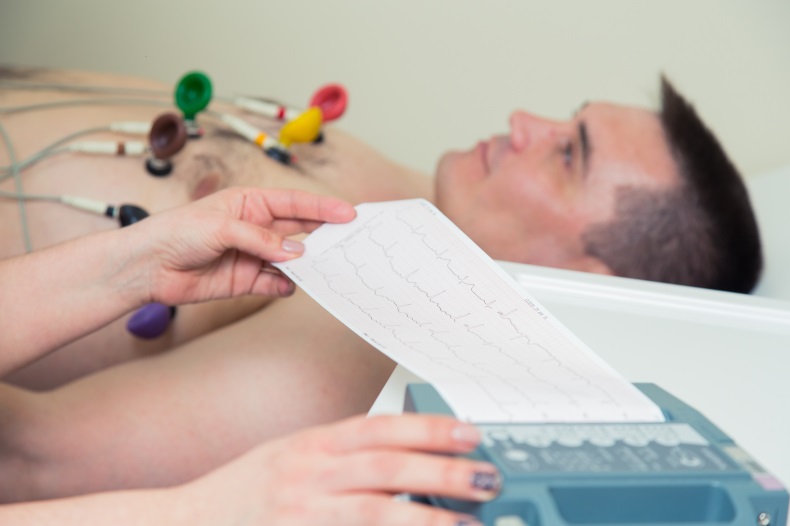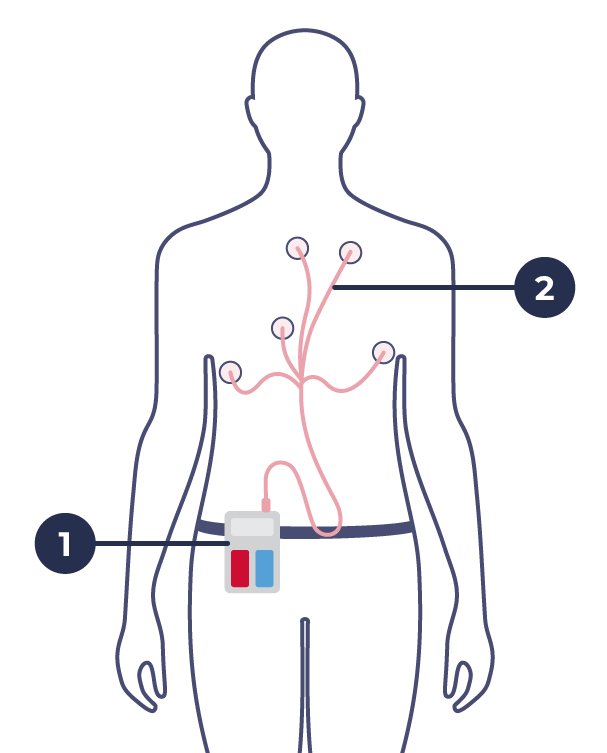An ECG is used to find out what kind of heart rhythm disorder you have. The ECG shows the electrical activity of your heart. An ECG is also used to examine whether there are signs of affected blood supply to the heart – for example, if there is a suspicion of a blood clot in the heart with symptoms such as chest pain.
An ECG recording is a quick and painless examination. It can be performed by your general practitioner or at the hospital or by a cardiologist.
One puts some small, self-adhesive, electrodes on the skin of the chest, shoulders and hips (sometimes wrists and ankles). Wires are connected from an ECG recorder and then you can record an ECG, where you get a recording of the heart’s electrical activity seen from different angles – represented by the location of the self-adhesive electrodes. The recording can be printed on a piece of paper. The results of the recording represent the electrical activity from the atria and from the heart chambers (“ventricles” or “pump chambers”), respectively.
If you only have a heart rhythm disorder occasionally, the ECG recording at a given time can easily be completely normal.


Holter monitor
In these cases your physician may recommend recording the heart rhythm over a longer period of time – for example 1, 2 or more days. For this use we have various devices, which are often called “Holter recorders”. Or “Event recorders”.
- Holter monitor (Event recorders)
- Chest electrodes

Electrocardiogram (ECG) with Apple Watch
You can also record an ECG yourself- for example using an Apple Watch (Series 4 or higher) or an AliveCor device.
This allows you to record 30 seconds of heart rate – ECG – and save it. Or immediately pass it on to your doctor if you have an appointment for this. This kind of technology will surely become much more widespread over the next few years.
Take an ECG with the ECG app on Apple Watch